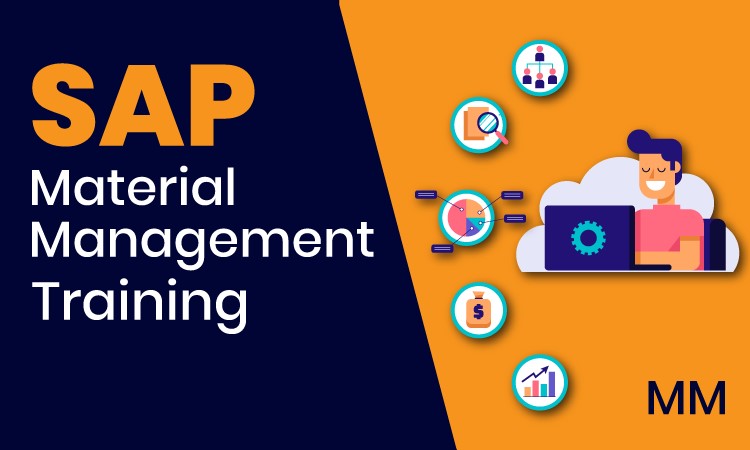In SAP, the Materials Management (MM) module decides the price of each material based on valuation methods, pricing procedures, and accounting integration. The system does not randomly store prices. It uses configuration settings and calculation rules that determine how a material’s value changes during procurement, production, and inventory transactions. Learners taking SAP MM Online Training often focus on purchasing and inventory but miss how valuation logic actually controls financial accuracy. SAP MM ensures every movement of material automatically updates its value in real-time and keeps financial records consistent with physical stock.
How SAP MM Controls Valuation?
SAP MM works on the principle of valuation areas and valuation classes. A valuation area can be defined at the company code or plant level. This defines the accounting scope for materials. Valuation class links materials to general ledger accounts, which means different types of materials can post to different accounts.
Each material is assigned a price control indicator in its master data, which defines whether its value changes dynamically or stays fixed.
- Standard Price (S): Keeps the value constant for all transactions.
- Moving Average Price (V): Changes the value based on every goods receipt or invoice.
SAP uses this indicator to decide how to post changes in material cost when goods are received or invoices are processed. These settings ensure uniform valuation logic across the system.
Internal Process of Material Price Determination
When a purchasing transaction occurs, SAP determines the material price using several data layers. It checks condition records like info records, contracts, and purchase orders, which contain price details from the vendor. The price determination process depends on the condition technique configured in the system.
This technique uses condition tables, access sequences, and schema groups to search for valid prices in a defined order. If no specific price is found, SAP uses the last valuation price stored in the material master.
How SAP Tracks Material Value Across Movements?
Each time a material moves – either through purchase, issue, transfer, or production – SAP automatically posts a financial entry. The connection between MM and Finance (FI) modules is achieved through automatic account determination.
Key movement types like goods receipt (101), goods issue (261), and transfer posting (309) trigger posting rules defined by transaction keys in configuration. These transaction keys are mapped to general ledger accounts through the T030 table.
For example:
- During goods receipt, SAP debits the inventory account and credits the GR/IR clearing account.
- During invoice posting, it debits the GR/IR account and credits the vendor account.
- During material issues, it credits inventory and debits the cost center.
Material Ledger and Actual Costing
The Material Ledger (ML) is an advanced valuation component that records all material-related transactions in detail. It allows tracking of costs in multiple currencies and across different valuation methods.
Material Ledger collects information from all procurement and production processes. It stores standard cost, planned cost, and actual cost separately. At the end of each period, it performs actual costing, recalculating the actual material value by considering variances such as price differences, freight, or exchange rate changes.
Key Configuration Parameters in SAP MM Valuation
SAP MM valuation control depends on specific configuration settings that determine how material value behaves during business processes.
| Parameter | Purpose | Impact |
| Valuation Area | Defines where material valuation is carried out (plant or company code) | Controls valuation scope |
| Price Control (S/V) | Determines fixed or dynamic pricing | Defines how prices are updated |
| Valuation Class | Links material to G/L accounts | Directs value postings |
| Account Category Reference | Enables multiple values for the same material | Simplifies configuration |
| Split Valuation | Enables multiple values for same material | Allows price variation by source or quality |
| Price Determination Indicator | Controls how actual costs are derived | Used in Material Ledger for actual costing |
Each configuration point has a direct role in how the system decides value during transactions. Incorrect configuration can lead to valuation mismatches or incorrect postings in financial accounting.
Advanced Valuation Scenarios in Enterprise Systems
In large-scale implementations, material valuation is not limited to procurement and inventory. It extends to production and inter-company processes. When materials are transferred between plants or company codes, SAP revaluates them based on internal transfer prices or market values.
In SAP MM Training in Gurgaon, many organizations focus on this advanced valuation scenario because manufacturing and automotive sectors in the city require precise cost control across multiple plants. Integration between MM and CO modules allows these companies to trace cost variations directly to specific cost centers.
Similarly, SAP MM Course in Bangalore with Placement programs emphasize valuation automation using SAP S/4HANA. Bangalore’s industrial ecosystem is moving toward predictive costing models that use Material Ledger data for real-time margin analysis. The focus here is on building systems that adjust valuation dynamically as market rates fluctuate.
Key Takeaways
- SAP MM valuation ensures material value is calculated, updated, and tracked automatically during all transactions.
- Price determination relies on structured condition techniques, ensuring consistency across procurement documents.
- The Material Ledger component enables multi-currency and parallel valuation for global cost transparency.
- SAP MM Training in Gurgaon prepares learners to handle inter-plant valuation, transfer pricing, and cost center analysis in industrial setups.
- SAP MM Course in Bangalore with Placement focuses on predictive valuation methods using S/4HANA, aligning with current industry demand for real-time cost control.
Sum up,
SAP MM valuation is the base of financial accuracy in procurement and inventory. The module controls how prices are derived, how material values are updated, and how those values are reflected in finance.
Every configuration, from price control to account determination, contributes to transparent and reliable valuation. The Material Ledger further enhances this process by offering actual costing and multi-currency valuation.
Professionals mastering this logic through SAP MM Online Training can manage valuation systems that directly support financial stability and operational precision in modern enterprises.
